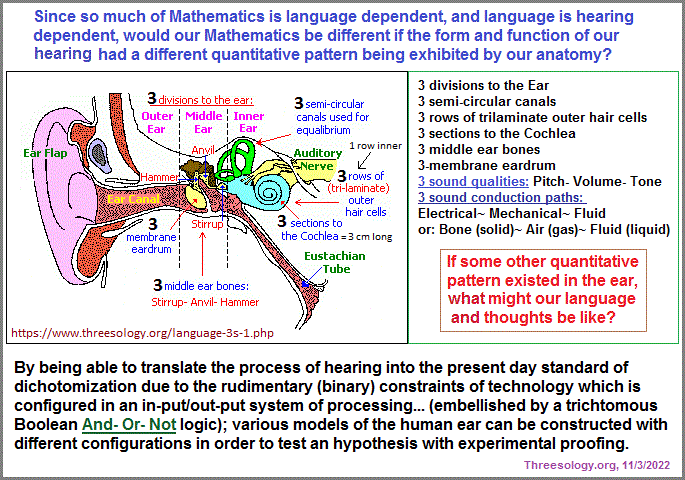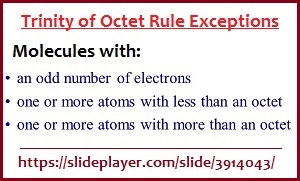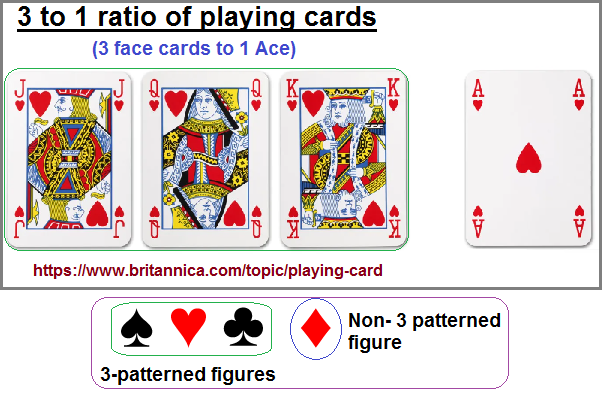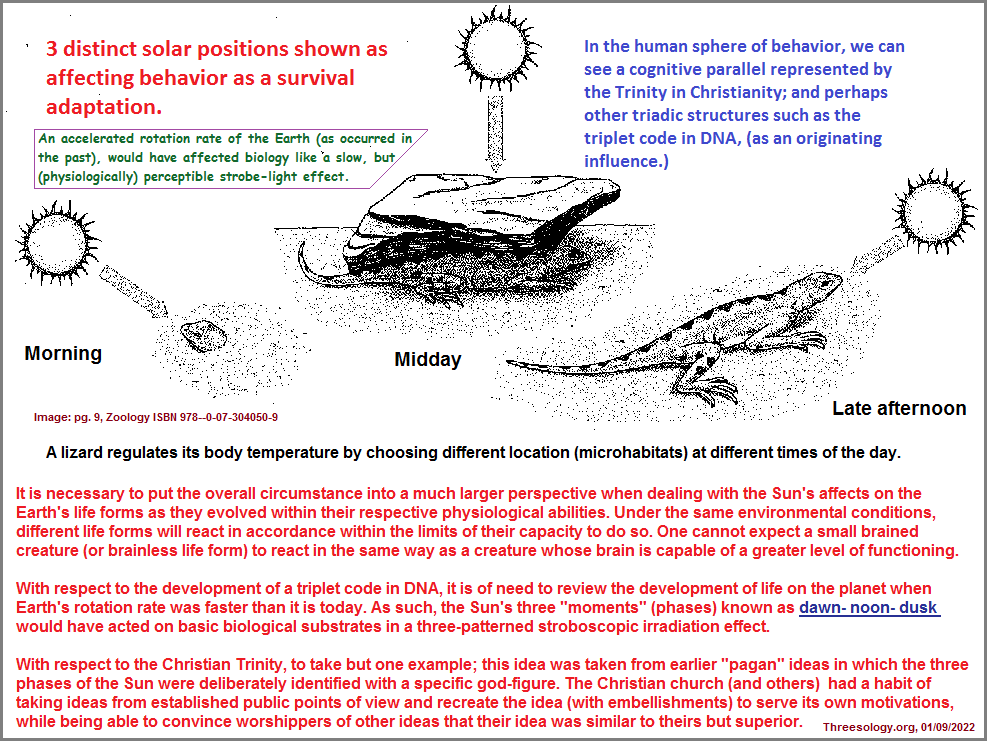page 30
Progressive Thinkers as of 12/1/2022
|
| ||||||||||||||||||||||||||||||||||||||||||||||||||||||||||||||||||||||||||||||||||||||||||||||||||||||||||||||||||||||||||||||||||||||||||||||||||||||
Imitating natural sounds
The Bow-Wow Theory explains that language originated when our ancestors tried to imitate the sounds they heard around them, specifically sounds from the natural world. However, there are very few words used in any language today that sound like what they represent. There are many holes to this theory, one of which is that the words used to represent one thing vary from one language to another. The barking of a dog is represented by very different words from one country to another.
Meaning = Sound
The Ding-Dong Theory on the other hand states that language developed as a response to the "essential qualities of objects." The first sounds that people made were in harmony with the world. The first words were signs the forms of which were an exact image of their meanings (e.g. thunder, boom). However, it may not be possible to establish firmly that there is a connection between meaning and sound.
Involuntary and spontaneous exclamations
The Pooh-Pooh Theory claims that the first speech originated from involuntary and spontaneous cries of surprise, dislike, pain, hunger and other emotions. However, animals make interjections too and yet they did not develop language, and of the many languages in existence, the interjections are limited and they are also language specific.
"Work Song"
The Yo-He-Ho Theory proposes that language and speech started with grunts and groans as well as chants, and rhythmic sounds that the earliest peoples use to coordinate their movements as they work together to accomplish a formidable task. In effect, this theory claims that language originated from the cooperative efforts of human beings. This is exemplified by marching chants and working songs. This theory is quite effective at explaining the rhythmic features of human speech. However, the origin of words is in no way explained by the theory.
Interesting Theories on the Origins of Language: DT Take! by Bernadine Racoma 23 July 2013
The Bow-Wow Theory
According to this theory, language began when our ancestors started imitating the natural sounds around them. The first speech was onomatopoeic—marked by echoic words such as moo, meow, splash, cuckoo, and bang.
What's wrong with this theory?
Relatively few words are onomatopoeic, and these words vary from one language to another. For instance, a dog's bark is heard as au au in Brazil, ham ham in Albania, and wang, wang in China. In addition, many onomatopoeic words are of recent origin, and not all are derived from natural sounds.
The Ding-Dong Theory
This theory, favored by Plato and Pythagoras, maintains that speech arose in response to the essential qualities of objects in the environment. The original sounds people made were supposedly in harmony with the world around them.
What's wrong with this theory?
Apart from some rare instances of sound symbolism, there is no persuasive evidence, in any language, of an innate connection between sound and meaning.
The La-La Theory
The Danish linguist Otto Jespersen suggested that language may have developed from sounds associated with love, play, and (especially) song.
What's wrong with this theory?
As David Crystal notes in "How Language Works" (Penguin, 2005), this theory still fails to account for "... the gap between the emotional and the rational aspects of speech expression... ."
The Pooh-Pooh Theory
This theory holds that speech began with interjections—spontaneous cries of pain ("Ouch!"), surprise ("Oh!"), and other emotions ("Yabba dabba do!").
What's wrong with this theory?/
No language contains very many interjections, and, Crystal points out, "the clicks, intakes of breath, and other noises which are used in this way bear little relationship to the vowels and consonants found in phonology."
The Yo-He-Ho Theory
According to this theory, language evolved from the grunts, groans, and snorts evoked by heavy physical labor.
What's wrong with this theory?
Though this notion may account for some of the rhythmic features of the language, it doesn't go very far in explaining where words come from.
As Peter Farb says in "Word Play: What Happens When People Talk" (Vintage, 1993): "All these speculations have serious flaws, and none can withstand the close scrutiny of present knowledge about the structure of language and about the evolution of our species."
But does this mean that all questions about the origin of language are unanswerable? Not necessarily. Over the past 20 years, scholars from such diverse fields as genetics, anthropology, and cognitive science have been engaged, as Kenneally says, in "a cross-discipline, multidimensional treasure hunt" to find out how language began. It is, she says, "the hardest problem in science today."
As William James remarked, "Language is the most imperfect and expensive means yet discovered for communicating thought."
Five Theories on the Origins of Language By Richard Nordquist Updated on June 29, 2020
The origin of language can be sub-divided according to some underlying assumptions:
- "Continuity theories" build on the idea that language exhibits so much complexity that one cannot imagine it simply appearing from nothing in its final form; therefore it must have evolved from earlier pre-linguistic systems among humans' primate ancestors.
- "Discontinuity theories" take the opposite approach—that language, as a unique trait which cannot be compared to anything found among non-humans, must have appeared fairly suddenly during the course of human evolution.
- Some theories consider language mostly as an innate faculty—largely genetically encoded.
- Other theories regard language as a mainly cultural system—learned through social interaction.
Whereas it is not difficult to appreciate the difficulty in speaking without an ability to hear, the subject of the ear and hearing is not routinely studied along with language and linguistics. It is a rather astonishing circumstance since it can be easily pointed out that a pattern-of-three is evident, but philosophical considerations involving speech and thought processing have not included the "what if" juncture of consideration by considering how different language and thought may be if the structure and function of the ear were different. However, we do not need to leave such a question to a mere exercise of philosophy lasting for centuries as is the case for the ideas of nature/nurture and body/mind dichotomies. The ability of electro-mechanical substitutions for the ear can be undertaken by those in engineering departments, and thus extend this idea onto the current physics notion of the "wavicle" created by the duality of a double-slit experiment.

It was a very curious find I made many decades ago. I kept running into references which featured a "three" or "third", though I must admit such words or the numerical equivalent was not always available to be directly perceived, since on many occasions I found ideas which referenced three different items in context, since authors do not always reference the word or symbol for three when speaking about three items. They may name three items or even repeat one item three times or one item once and another item twice, thereby totalling three, but never actually saying the word "three" or providing any numerical indication thereof. The fact that we use three sentence ending marks known as a period, question mark, exclamation point and that most people apparently hold a pen or pencil with three fingers (technically two fingers and a thumb), suggests there may be other instances of doing or saying things in a group-of-three that are likewise taken for granted and used quite commonly. It is also of interest to note that when looking for a given number-pattern, different cultures may use different numbers more often than another culture, but unless one is immersed in studying other cultures, such an idea remains fanciful, and one must rely upon the reports of those who study other cultures with respect to their enumerated patterns. However, this is not to say that one or another researcher will have the same type of observational skills as someone else... thereby either not telling the whole story or misreading available patterning because of a bias or cursory review due to some pressing workload that disengages them from delving deeply into a given culture.

Not only has my interest in patterns-of-three found discrepancies in the views of others, but that I too am not immune from error and can overlook the presence of an obvious example... to my amusement that even when actively searching for a pattern, it is like painting a wall whose color can blind you for a time, requiring that you focus your intentions elsewhere. Hence, I also like to identify when patterns-of-three are absent and some other pattern makes an appearance. Like a game of hide-n-seek or musical chairs I find myself having to engage in different intellectual pastimes in order to recognize the obvious. Thus, it goes without saying that patterns-of-three are not ubiquitous. Other patterns make their debut... sometimes more often in one subject than another. Take for example the Octet rule in chemistry. While one might use the example to "prove" that there are other patterns, it also proves that a recurring dominant pattern in one subject it is appreciably absent in others. If we are looking solely for the quantity of examples for a given number pattern, than patterns-of-eight would prove to be a small list. Therefore, its context must be kept in mind as well as the presence of mind regarding its unsuitability for all chemical situations. Specifically, there is a Trinity of Octet rule exceptions. Hence, I keep in mind the number 8 and 3 for reference elsewhere, to see how often or irregular such a combination comes up in different subjects.
I sometimes encounter objections to making a list of "threes" by way of what appears to be a complaint fashion on some notion of fairness. In other words, that by collecting examples-of-three, I am somehow being unfair to other numbers, and therefore someone takes up the charge to project them forward such as patterns-of-four... as if in so doing, they are presenting a greater value as expressed in the arithmetical composition of a serial count. 1...2...3...4...etc... Like some sort of one-upmanship game played in childhood, by naming a "four" pattern they have somehow been able to subdue any and all expressed patterns-of-three. That is until I change the subject of dissection from being merely a compilation of examples to making reference as to the context of a given pattern-of-three being more important than some named pattern-of-they offered. For example, by stating that the Earth is the third planet, this statement acts as a means of trumping or beating a reference such as the four directions concept. It is much like assigning a greater value to a card with four spades as opposed to one with four hearts, diamonds, or clubs, though such a ranking method may not be accepted by everyone. However, of the four suits, the design of the figures can be viewed as exhibiting a 3 -to- 1 ratio in that the spade, heart and clover suggest a "three" figure, and the diamond suggests either a two + two (mirror image) profile or a four, not to mention that the top value cards consist of three face cards and 1 ace.:

Yet, the patterns-of-three which I see are typically short distance varieties. In other words, they occur nearly in the same time frame of observation, generally in the same context. Whereas I may well catalogue examples of three occurring in different time periods spanning centuries, the distance between singular events is appreciably condensed. It is difficult to be aware of three separate events which may somehow be connected or viewed as being similar, (for example) like three volcanic eruptions from a single volcano spanning a long expanse of time. The only relationship such volcanic eruptions may have is in our viewing of them as a group-of-three. Yet, why do we choose such a formula when there are multiple other numbers to be used as an interconnecting theme? Then again, even if we (for example) count having five fingers, we might well seek to isolate some other pattern such as using the middle finger as a central point, whereby there are three fingers from the middle of the hand outwards. Or we might otherwise describe the three finger bones, with the occasion of two bones with the thumb as an expression of a much earlier skeletal development, unless the thumb once had three bones and underwent a regression... which differs from the three-part fusion we see in the hooves of horses. The reason for turning to biology for examples of basic patterns which can be enumerated, is because we can consider that biological expressions can be without human intervention or bias... at least in some cases such as when we point out a "2" pattern associated with the mouth/anus arrival in the biological record as a dichotomy... unless it is more important to note such a compilation is a human bias and the actual pattern to see is two singles... or a pairing of singles.
Yep, we can read a pattern into material being observed. In other words, we can apply imagination to observations and claim that we see something that other may or may not agree with. And yet, different people in different cultures frequently derive the same organizational pattern... be it wrong or right and be it claimed as a result of human physiology being exposed to similar contexts or materials being observed. On the other hand, while some may claim (for example) the existence of a trinity (in Hinduism or Christianity), others do not "see" such a structure to the extent of believing in it. They may accept that other believe in the existence of such a "three" pattern, but they themselves do not. Nor is there any apparent reason for people to claim they "see" such a trinity unless we accept the view that many people can be trained (like an animal) to accept the existence of a false reality adopted as a truth because of an existing social/familial reward/punishment system they are exposed to. Nonetheless, this does not explain why a "three" pattern was adopted in the first place. If it were simply an expression of power, than one might consider a pantheon of six or nine or twelve god-like figures would be a better belief. Why does "three" have an appeal when we strip away all cultural influences? Why do we have Trinity compilations and not a seven-fold configuration for all those who attach themselves to hold the number 7 as being highly significant? Why do so few people search for the origin of their interest in a given number (pattern)?
If we say that an interest in a given number pattern is based on some linguistic influence, then perhaps a survey of infant babbling is appropriate, since it appears all infants babble and that such babbling is without the influence of any culture... though parents the world over think their child is speaking their respective language and do not call it an "infantese". And why is it too that while a given pattern can be dominant, it is dismissed, ignored or otherwise not rewarded, while some (perhaps) lesser occurring pattern is focused on and encouraged to be expressed?
Many a researcher of infant vocalizations speak of a "CV" (consonant/vowel) grouping, but do not necessarily numerically itemize it as being a two-part expression (or two singles fused together). Most researchers simply follow the trend of thinking of other researchers who likewise do not itemize linguistic distinctions in terms of enumerations aligned with the idea of a developmental cognitive sequencing that was historically expressed by humans through the use of a developed counting system, and for which basic biological patterning exhibits as well.
Environmental influences ordinarily do not begin to influence vocalization seriously before two months of age; in fact, during the first two months of postnatal life, the vocalizations of deaf children born to deaf parents are indistinguishable from those of infants born to hearing parents. Environmental effects on the variety and frequency of the infant's sounds become more evident after roughly eight weeks of age. The use of meaningful words differs from simple babbling in that speech primarily helps to obtain goals, rather than simply reflecting excitement. ("human behaviour." Encyclopædia Britannica, 2013.)
Hence, from the short paragraph above we see that there is a need to distinguish between different types of vocalizations with respect to a person's ability to hear. The relationship with hearing to language and language to a preference in a given number pattern such as the "three" is made more telling and yet all the more puzzling for some when they take into account the ear and the mechanism of hearing, with respect to an enumeration of its parts and activities as identified by a multitude of observers:


In listening to infant babbling one might think that the formation of two-patterned (consonant/vowel) utterances would somehow dominate later thinking, which it may well do and had been a primary influencer for the development of the two-part Eastern culture yin/yang philosophy, and later for the two-part Western culture Mathematics. And yet, when we find that the topic of particle physics has a predominant structure of "three-patterned" groupings, one must wonder if the observations are correct or that it takes time for human consciousness to adopt a cognitive narrative inline with a developmental physiology expressed in the one- two- three germ layer sequencing as well as the idea of an "RNA world" hypothesis, where RNA is single stranded and DNA is going to come onto its own double stranded entity in a yet-to-come developmental fashion where the two macromolecules will eventually share some of the same limelight on the biological stages of development, ... both of which are a sequence in keeping with the 1, 2, 3... sequencing found in early human attempts at counting, where I have often used the three-patterned phrase of "one- two- many" as a generality.
Whereas multiple philosophers have spoken of a three-patterned monad- dyad- triad formula of conceptualization, or herein framed as a three-patterned sequence of monad-morphism, dyad-morphism, poly-morphism, with "poly" and "plurality" being synonymous with the mathematical concept of infinity or the early counting limitation described as "many, heap, pile, all" etc.; we do not see such a flavor of thinking aligned with an attempt to establish a more definitive explanation for such a conceptual framework by way of a biological model of development which imprints itself on the human psyche. Whereas Astrologers claim that the Stars and alignments have an affect on human behavior, they have not yet reached the cognitive stage of conceptualization which takes into account numerical indices found in basic biology can extend an influence from the bottom up, to contrast with their view of a top-down hierarchy of influence. It is even more astonishing that many of them moonlight with Numerology yet do not adequately nor accurately append the distinctions of numerical serialization to the obvious absence of a large subset of enumerations being used. In other words, when we take stock of all the numbers being referenced by Numerologists, it is extremely uncommon to find anyone detailing the presence of an extreme limitation, when we take into consideration the assumed infinity of numbers at our disposal. Since the human psyche's reputation is to use only a few numbers in a repetitious way is being focused on in the efforts of those wanting to exploit such a circumstance to provide themselves with some increased survivability in terms of establishing a commercial readership, it would stand to reason that if a reasonable accommodation is to be made to our appreciation of external influences on the human psyche and its participatory emotional repertoire, that there would be a more honest and accurate accountability so as to provide the most current and greatest currency of information for making a truly informed deduction and prognostication to benefit those in attendance of one's presumed tripartite organized whole-person tangibility, whether described as:
- young soul- old soul- ancient soul
- virgin- mother- crone
- id- ego- superego
- subconsciousness- consciousness- superconsciousness
- sanity- insanity- supersanity
- prefix- infix- suffix
- singularity- binary- trinary
- hell- purgatory- heaven
- lst place- 2nd place- 3rd place
- bronze- silver- gold
- priests- warriors- producers
- lower kingdom- middle kingdom- upper kingdom
- primary- secondary- tertiary
- son- father- holy spirit
- Major premise- Minor premise- Conclusion
- small- medium- large
- 85-87 octane- 88-90 octane- 91-93+ octane
- 75% Potassium nitrate~ 15% Charcoal~ 10% Sulfur (Gunpowder)
- seconds- minutes- hours
- protons- neutrons- electrons
- solid- liquid- gas
- baby bear- mama bear- papa bear
- reptilian brain- old mammal brain- new mammal brain
- testing 1-2-3 (microphone)
- snap- crackle- pop (rice krispies cereal characters)
- ectoderm- mesoderm- endoderm
- ectomorph- mesomroph- endomorph
- land- sea- air
- linear- circular- triangular
- etc...
Because we can see certain recurring patterns in biology and physiology, it stands to reason that such patterns may have an impact on human thinking in terms of limitations, directions and applications. However, there are those that would like to consider a formula of thinking that is distinct and separate from any biological, physiological or even environmental influence, and therefore... no pattern deducible in biology, or physiology or the environment can ever be replicated in human thought, or requires a type of processing which expresses the presence of an evolved (mutated? extra-terrestrial) human. Because if such areas of influence do exist, then human imagination as well is subject to the limitation of development... including any mutation which might appear as part of evolutionary processes. If such processes do invest themselves in different ways with symbols and language respective of a given environment, then one might be said to be practicing an elaborated mimicry. In other words, their ideas, their views, their supposed wisdom and insight, are extensions of patterns being expressed by their physiology, their biology, their environment. If this is true, we must wonder if one's biology, one's physiology, one's environment is "true" beyond that which it functions as in a given era.
There is an interesting correlation between language and environment, to which we can alternatively include the notion of "territory" in terms of intellectual realms or domains. Hence, one's physiology, one's genetics, one's social environments are ranges of possible exploration. In some sense, one might describe a situation such as to think differently one must be differently, though in thinking differently, this does not mean such an occupation is limited to oneself... others might also explore or habitate such a territory if they were exposed to it long enough for them to establish an understanding of its resources for survival. This then evokes the idea that a superior, non-human type of thinking is possible if it involves a territory of physical (or simply mental) exploration that is not necessarily conducive to human life in either a short or long term, but that an artificial means of maintaining one's presence in such an environment can assist in the influence of thoughts which can be useful for human habitation in the norm or even non-norm situation. An analogy to this is the idea that in order to achieve what may be described as a superior model of thinking can be found in the idea of a person "getting away from it all" (their customary environment and those/that in it). Such is the case in the telling of the tale about Jesus spending 40 days and 40 nights in the wilderness... a "wilderness" thought to be the desert during the time Jesus was supposedly alive. However, during such an era, the "wilderness" need only be a distance away from social support in a barren landscape inhabited by a superstitious and illiterate people whose fears may well have been commensurate with a deep irrationality.
The first image is that of a link between human language groups and polar bears:

The next image displays how the effects of the Sun during three distinct, but overlapping zones of irradiation can affect the behavior of a lizard, while at the same time suggesting that human biology, physiology and psychology may well be sensitively impressionable enough to have had its biology, physiology and psychology contoured along a three-patterned path of expressiveness within the range(s) of expressiveness characteristic of its flexibility and rigidity of design.

Let us ask how the biology of one's body is to express an ability to count as a response to a repeated "counting" event taking place in nature, if such a biology does not have a mouth in the conventional sense, nor have an accompanying language or vocabulary? In addition, how does one's physiology express a repeated exposure to an impression we would describe as a counting sequence, if it does not have a conventional mouth, language and vocabulary? And if one does have a mouth but uses unintelligible, gibberish, uneducated language with a poor or limited vocabulary, how does it describe the exposure to a repeating pattern suggestive of a counting sequence? And if that counting sequence is merely the same expression with a gap, thus revealing the same type of pattern at a three-exposure interval, then does the presumed count reference the exposure of prominence or the exposure of absence? In other words, does a pattern-of-three reflect more so that which is forward in perception or that which is absent... that which is in between the perceptions we are more inclined to illustrate? Is it the present or absent pattern-of-three and does this represent a six or just an impression-setting sequence of three? A sort of dot dash dot dash dot... repeat? where in terms of a Morse code message, we are confronted with a three-part "end of message" signature.
In counting rhymes, we can detect the presence of four lines, but a three-to-one criteria:
One for the moneyTwo for the show
Three to get ready...
"and"
Four to go.
The "and" in the foregoing is a means of separating the first 3 from the following or final one. Hence, we have a 3 -to- 1 ratio. Another example with a different characterization referencing a selection process is as follows:
Eeenie, Meenie, Minie, MoCatch a Nigger by the Toe
If he hollers let him Go
My mother told me to pick the very best one.
Not only do we find the first three words rhyming, but the first three ending words also rhyme and mark a difference with the next line which does not rhyme.
There are other examples though not necessarily referred to as counting rhymes, but may nonetheless support such an inference due to exhibiting a similar structural pattern. Take for example the common Birthday slogan with a positioning of lines whose repetition is nonetheless a rhyme and also reflects a 3 to 1 ratio:
Happy Birthday to youHappy Birthday to you
Happy birthday to... (someone's name)
Happy Birthday to you
We also have an example in the familiar get-together cheer that I have shortened to the first few lines:
For he's a jolly good fellowFor he's a jolly good fellow
For he's a jolly good fellow
which nobody can deny
It is of value to review something of rhyme:
There are three rhymes recognized by purists as “true rhymes”: masculine rhyme, in which the two words end with the same vowel–consonant combination (stand / land), feminine rhyme (sometimes called double rhyme), in which two syllables rhyme (profession / discretion), and trisyllabic rhyme, in which three syllables rhyme (patinate / latinate). The too-regular effect of masculine rhyme is sometimes softened by using trailing rhyme, or semi-rhyme, in which one of the two words trails an additional unstressed syllable behind it (trail / failure). ("rhyme." Encyclopædia Britannica.)
Date of (series) Origination: Saturday, 14th March 2020... 6:11 AM
Date of Initial Posting (this page): 9th January 2023... 12:33 AM AST (Arizona Standard Time); Marana, AZ.